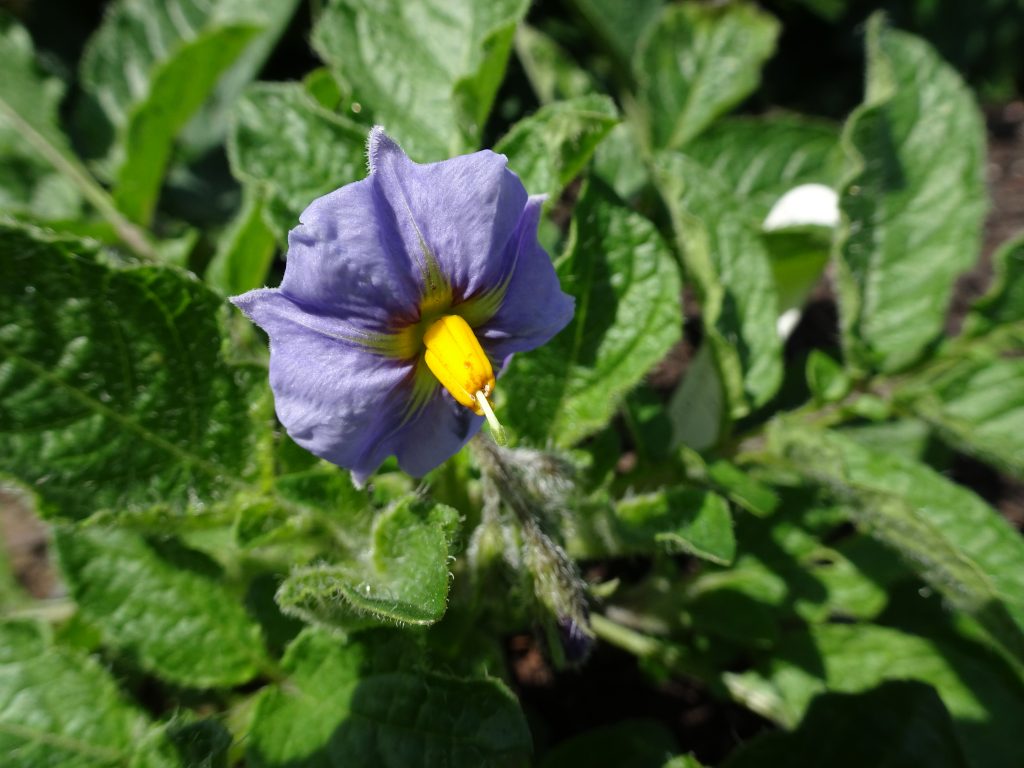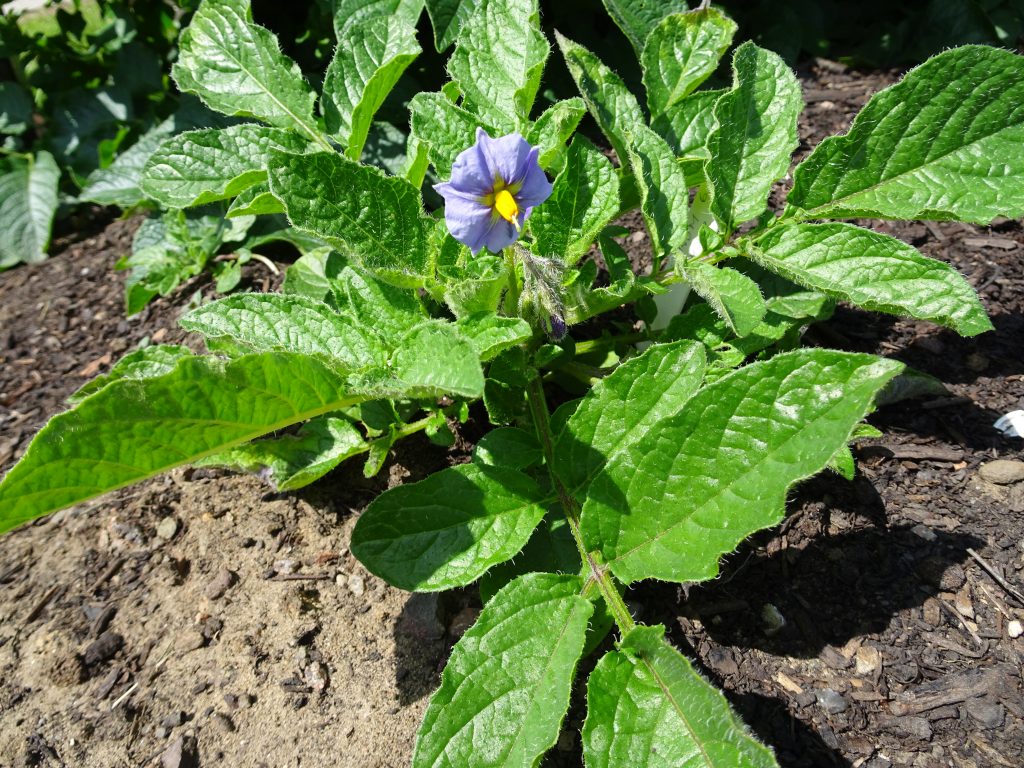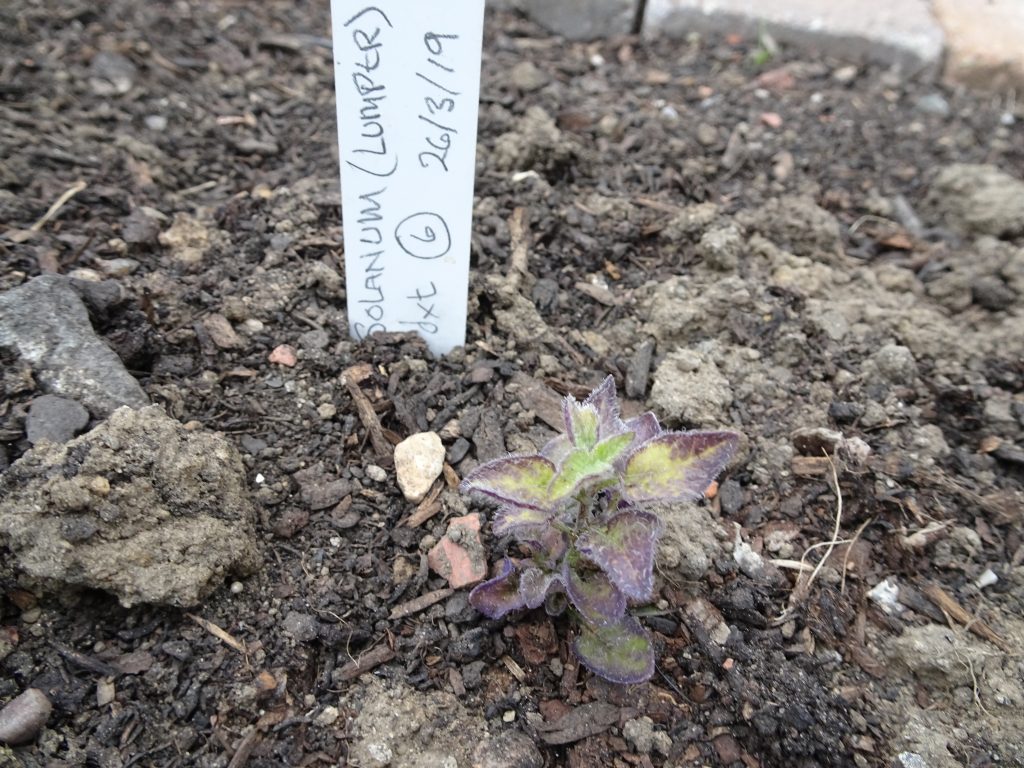Having waited a full year to see the fruits of our labours in a potato breeding project we have finally been rewarded with success today. Our aim was to recreate the Edinburgh potato (Solanum xedinense), which is found naturally occurring in Mexico. The first flower to open has provided the final proof of success in recreating what is in fact a hybrid of two potato species. The parents of this cross are the familiar spud or tattie, Solanum tuberosum, and a wild Mexican potato, Solanum demissum. In Mexico this hybrid is found where fields of potatoes grow alongside the wild potato and interbreeding happens naturally.

But why, you might ask, is a Mexican potato associated with Edinburgh? Well, the potato in question was originally described as new to science in 1911. In the scientific paper where the name and description was published the author based the observations on plants he grew that originated from RBGE. Consequently, Berthault, the French botanist behind the name of this plant, decided to choose a name based on Edinburgh – edinense. As a result, we can reasonably claim this potato as Edinburgh’s own, although Mexican’s might have something to say about that. You can read a bit more background to the story in an earlier blog post Recreating Edinburgh’s potato.

One curious discovery we have made in the process of conducting controlled crosses between the two parent species is that in many cases the hybrid offspring grow very weakly and fail to thrive. Not all seedlings have done this and we do have a few healthy hybrids. Research by others has shown that sometimes hybrids suffer from genetic incompatibilities between the parents that result in what has been called hybrid necrosis. A syndrome where the plants defense mechanisms may become self-destructive.

It will be interesting to see how the few healthy Edinburgh potatoes develop over the summer and to see whether tubers are produced. The Mexican parent produced very small pea-sized tubers in 2018, so it is unlikely that the Edinburgh potato is going to be winning any prizes in the giant vegetable category of a flower show!
In the meantime, some of our seedlings are undergoing testing at the James Hutton Institute to see whether or not they have inherited resistance to late blight from their Mexican parent. It was this disease that devastated the potato crop in Ireland over several seasons from 1845 and contributed to the Irish Famine. This disaster was instrumental in initiating Scotland’s research on potatoes and the ongoing breeding and genetic research to overcome such problems led by the James Hutton Institute.
The full details of the process of recreating the Edinburgh potato are published in Sibbaldia: The International Journal of Botanic Garden Horticulture issue 19 available to download here.
